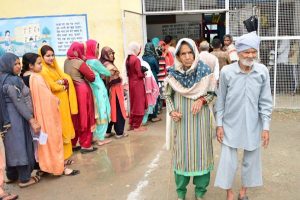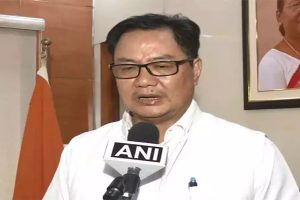The ongoing flood situation in several parts of peninsular India has left people confused. Just a few months ago, the states were declared drought-hit with a severe drinking water crisis. Yet, images of the 2015 floods in Chennai are still fresh in one’s memory. Reports of the recent floods in Bangalore and Mumbai poured in even as the region was declared to be facing the worst drought in recorded history.
“Drought is nothing new to India since organised agriculture began some 10,000 years ago,” asserted Richard Mahapatra, managing editor of Down to Earth(DTE), a fortnightly brought out by the Centre for Science and Environment (CSE). “Drought and rains have always been with us and people have learnt to cope with them. The trouble is, what was once an occupational hazard has now metamorphosed into a human-made disaster of unmanageable proportions.”
Launching DTE’s new publication, Drought,But Why? Mahapatra said in a panel discussion, 245 districts across the country faced extreme rainfall this year. But these very districts were reeling under drought-like situation in the rest of the year.
Therefore, every district faces both drought and floods. He also alluded to Rajasthan, which, going by data from the Indian Meteorological Department (IMD), experienced this year more than normal rains ~ 300 times than in last year. “It rained in the desert and the place faced three months of floods,” he said. “The people and the local ecology are not geared for excess water, leave alone floods.” In the midst of this seemingly excess water, 57 per cent of the country is more drought prone than 20 years ago. Even before monsoons have left the country’s shores, most areas faces water shortage and soon, drought. One is left wondering whether this drought is a natural phenomenon, human-made or the impact of climate change? The book adds another dimension to this situation ~ government policy.
“Let’s be clear about one fundamental aspect of this persisting disaster,” writes CSE director general Sunita Narain in the foreword to the book. “The severity and intensity of drought is not about lack of rainfall; it is about the lack of planning and foresight, and criminal neglect. Drought is human-made.” She explained how with growing industrialisation and urbanisation, a greater pressure is being exerted on water resources. India thus has to make a transition from the traditional water economy (where agriculture consumes 70 per cent of the water resources and industry and urban areas the rest) to a modern water economy that allocates more to industry and cities.
Narain refers to the opportunity missed in the decade preceding 2014, when the country had good rainfall years, and points to the need for a drought code. All we have is an outdated British-designed drought code, under which, in earlier times, drinking water would be requisitioned by local administration; fodder for animals would be procured from long distances; livestock camps would be opened and food-for-work programmes would be started.
The book also narrates success stories of several villages, which defied both vagaries of weather and climate change by adopting conservation practices. These villages, in chronic drought-prone areas of the country, remained unaffected by the scourge and offer the new commandments for drought management.
As part of the book launch, Down to Earth also screened a short film on water-budgeting in a village in Maharashtra. Speaking about the film, Eshwer Kale, an expert on water budgeting models that can fight drought and climate change, said, “The entire government policy is geared around increasing water availability. But, the existing mismatch in policy matters needs to be addressed.” He added there is need for people’s behavioural change and should own responsibility to manage their water. As part of the discussion, Nila MadhabPanda, the maker of a soon to be released film Kadvi Hawa, spoke of the erratic climate that was playing havoc with the seasons.
“With the country’s seasons now reduced from four to two, as monsoon has all but disappeared, the seasons are ailing and the air is diseased.” The book concludes by pointing to the need to drought-proof the country. “It’s not drought relief, we must seek relief from drought. We need tanks not tankers,” elaborated Mahapatra.
About the book: Drought But Why?
Published by Centre for Science and Environment
Pp: 126;
Price: Rs 240











